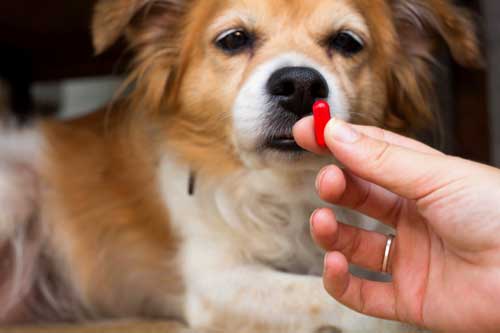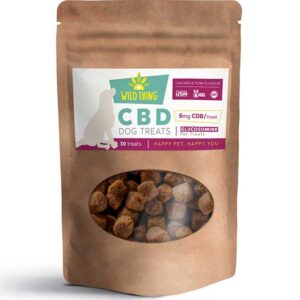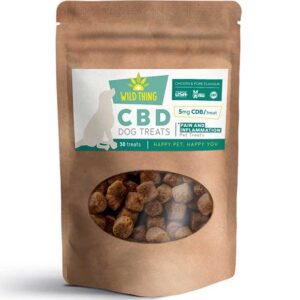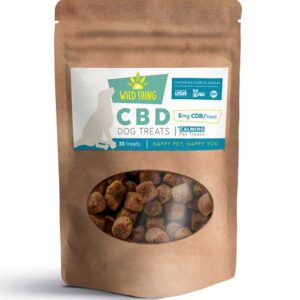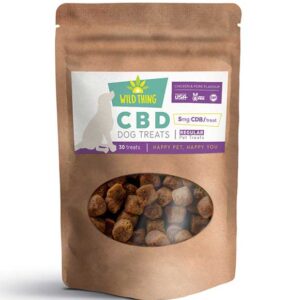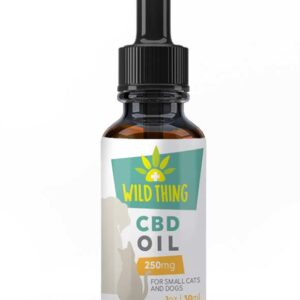Pets bring so much joy and energy to our lives it’s easy to forget that all their running and jumping around has an effect of their bodies. It’s normal for your dog to naturally start to slow down as they get older and this is usually the first sign that your dog is starting to experience joint paint. When this happens your dog becomes less active which results in less exercise, possibly worsening joint and muscle stiffness due to inactivity. So what can you do to get your doggo off the couch and back to doing wind sprints in the park again? Let’s have a look at Glucosamine and how it can help your dog get back to being the puppy it once was.
What is Glucosamine?
Glucosamine is a natural compound which is made up for amino acid glutamine and glucose and is one of the most common arthritis medications available today. This is one of several natural substances known as chondroprotective agents used it helping treat arthritis in most mammals like humans, dogs and many other animals. Dogs naturally produce glucosamine which helps form molecules that make up cartilage and joints, glucosamine is important for repairing the daily wear and tear of a dog’s joints and muscles. As your dog ages it produces less glucosamine which is what leads to them slowing down and developing joint problems like arthritis. When glucosamine is consumed it aids in the alleviation of joint damage by increasing the repairing effects of damaged cartilage. Glucosamine targets articular cartilage, the moist and spongy material that forms a cushion between joints.
When dogs consume glucosamine they receive main benefits such as:
- Anti inflammatory prevention and reduction
- Joint health restoration
- Increased mobility
- A natural lubrication for your dogs joints
- Limits the use of anti-inflammatory medication which only reduces pain, not repair it.
- Very little side effects

Glucosamine comes in three different forms, glucosamine hydrochloride (HCL), glucosamine sulfate, and N-acetyl-glucosamine. G.
Glucosamine sulfate
Glucosamine sulfate is the most commonly used and researched form of glucosamine. Sulfur is a vital building mechanism for our bodies which points to why glucosamine sulfate is the most effective and commonly used glucosamine to repair cartilage.
Glucosamine hydrochloride
Glucosamine hydrochloride is a more concentrated form of glucosamine that does not include sulfur. Although it contains hydrochloride instead of sulfur, most research has shown that there are very few differences between glucosamine hydrochloride and glucosamine sulfate, making it the second more common form of glucosamine.
N-Acetyl Glucosamine
N-Acetyl Glucosamine is created predominantly from shellfish naturally but can also be produced in a lab as well. N-Acetyl Glucosamine is a good option for dealing with joint issues, it is more commonly used for those dealing with irritable bowel syndrome and types of gastrointestinal conditions.
When dealing with joint pain for your dog your veterinarian will recommend using either glucosamine sulfate or glucosamine hydrochloride. They will most likely pair these supplements with things like MSM, turmeric or green lipped muscles. This provides a synergistic effect within your dogs body helping to act quicker and ease their joint pain in less time. A great option is our Wild Thing Pets CBD Dog Treats.
How Can Glucosamine Help Your Dog?

When dogs take glucosamine regularly it can help improve their range of motion and slow the aging process in their joints. Glucosamine is naturally produced within the joints, combining with collagen to produce and repair cartilage. Healthy cartilage acts as a shock absorber for dogs joints, as it is naturally flexible and sponge like, while the synovial fluid which is in-between the joints helps maintain a natural lubricant for joints. Glucosamine can help maintain both the cartilage and synovial fluid as your dog ages and their body doesn’t produce as much glucosamine as it should. Glucosamine is often recommended by veterinarians for a variety of ailments, though research is on going and the evidence is still building, glucosamine has been used for things such as:
Reducing inflammation
Most commonly dogs experience pain in places such as their hips and shoulders, this is due to those areas being weight bearing areas of their body’s. When your dog experiences inflammation it causes pain and pressure throughout their body, providing an all-around discomfort that will limit their movement and reduce their general energy levels. When taking glucosamine it acts as a natural anti-inflammatory remedy that is powerful enough to reduce inflammation and keep your dog pain free.
Building cartilage
The cartilage in a dogs body is important, as it is a cushion like tissue that helps keep their joints healthy. When a dog ages the cartilage in their body breaks down and the ability to recover and reproduce cartilage becomes more difficult. The normal day-to-day wear and tear of a dogs life can be taxing as they are very energetic animals. When giving your dog glucosamine it helps build cartilage as a faster pace, giving your old dog new life.
Gut health
When giving N-Acetyl Glucosamine to your dog, it not only helps with joints but their gut health as well. By creating connective tissues and repairing their mucous membranes, it helps create a barrier for their gastrointestinal system. Taking N-Acetyl Glucosamine has shown that it reduces inflammation specifically in their digestive tract and can help with irritable bowel symptoms, while also boosting their immune system.
Alternate to NSAIDs
It’s not uncommon for vets to prescribe nonsteroidal anti-inflammatory drugs (NSAIDs). However these medications do come with certain side effects and can potentially just mask the pain your dog is feeling instead of dealing with the issues directly. Using natural glucosamine can be a better option so it’s important you ask your vet is it’s better to take that instead of NSAIDs, or combine both an NSAID and glucosamine together.
Glucosamine in Foods

Glucosamine can come in various other options rather then a supplement, a variety of safe dog friendly foods contain glucosamine that can also be beneficial to your dog and a very tasty as well!
When you dogs gets glucosamine directly from food their body readily absorbes it, as the body knows exactly what to do when food is consumed. This means when getting glucosamine from a food directly, they don’t need to eat nearly as much compared to a synthetic supplement. This could be the best glucosamine for dogs, depending on their needs.
Trachea is made up of cartilage which means it is high in glucosamine. Various tracheas such as beef, lamb, goat and ostrich can be commonly found by raw dog food suppliers. Trachea is extremely bioavailable and a great option as it is a chewy beef meal that any dog will devourer.
Chicken feet are another great option that is loaded with glucosamine. These can be used as a crunchy snack or added to a dogs meal, you can also use other poultry feel like duck, turkey, good or guinea fowl.
Oxtails and pig tails are mostly made up of cartilage and surrounded by some meat. The cartilage in oxtails and pig tails are 5% glucosamine which makes them a perfect health meal with all the glucosamine your dog needs.
Shellfish shells are another great option for getting your dog glucosamine, you can buy wild shrimp and feed them the shells and tails of the shellfish. Or you can use the shells in a broth by simmering them in water for a few hours. It’s important to get the shrimp locally sourced as many grocery storey shellfish are farm raised and they contain pesticides and antibiotics.
Green lipped mussels are very high in glucosamine levels and have been known to reduce arthritis discomfort in both people and animals. Coming from New Zealand these mussels can be hard to find so you may have better luck finding green lipped mussel powders for dogs. Make sure the powder is cold extracted as heat destroys the nutrients.
Bone broth is another amazing way to get your dog the glucosamine it needs. It is loaded with glucosamine and other joint supporting nutrients. Use various types of bones like chicken feet, oxtails or leftover bones you have from other meals.
Glucosamine Side Effects
There are almost no side effects observed in dogs when taking glucosamine, in a rare case side effects may include:
- Allergies (specifically among those who are allergic to shellfish)
- Fatigue
- Insomnia
- Excessive thirst and urination (at high doses)
- Some are wary about the sugar-based substance’s use in dogs with diabetes
Is Glucosamine Right For Your Dog?
By now, you’ve learned where glucosamine comes from, the essential benefits, the common side effects, and the best food sources for glucosamine. We recommend consulting with your vet before making any drastic changes to your dog’s routine. But if you get the green light, you’ll see why dog lovers across the country are giving their four-legged friends a healthy dose of glucosamine.
Looking for somewhere buy glucosamine supplements for dogs? Try our CBD Glucosamine Dog Treats they are suitable for all breeds and all sizes of dogs. Formulated for dogs with joint, bone and cartilage issues, Glucosamine CBD Dog Treats supply your pet with the advantages of glucosamine along with the host of benefits of CBD. Including CBD & glucosamine in your dog’s daily routine is essential for tissue repair and mobility in joints, maintaining healthy cartilage, and reducing inflammation from everyday wear-and-tear or injuries. A mobile dog is a happy dog – and with Glucosamine CBD Dog Treats you can ensure your dog is not slowed down by joint pain or inflammation.
Want to Learn More?
Download our AILMENT GUIDE NOW.
PLUS! all FIRST TIME buyers get 50% off their additional order. Visit verlota.com to get your discount code.

